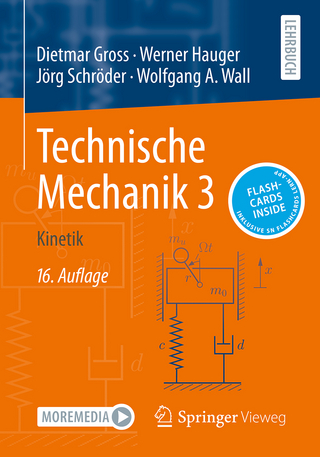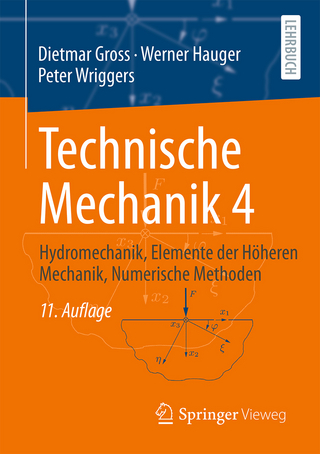
Nonlinear Crack Models for Nonmetallic Materials
Springer (Verlag)
978-0-7923-5750-6 (ISBN)
This volume will be of interest to students, professionals and researchers in the field of nonlinear fracture mechanics.
1. Introduction.- 1.1. Preliminary Remarks.- 1.2. Irwin’s Plastic Zone.- 1.3. Dugdale-Barenblatt Cohesive Zone.- 1.4. Stability of a Bridged Crack.- 1.5. Microcracked Zone ahead of a Macrocrack Tip.- 1.6. Final Remarks and Bibliographical Guide of the Author’s Contributions to the Subject of the Volume.- 1.7. References.- 2. The Damage Crack Model.- 2.1. Introduction.- 2.2. Strain Energy Density Criterion.- 2.3. Mode I Problems.- 2.4. Mixed Mode Problems.- 2.5. Size Effects on Strength and Ductility.- 2.6. References.- 3. The Cohesive Crack Model.- 3.1. Introduction.- 3.2. Basic Concepts of the Cohesive Crack Model.- 3.3. Mode I Problems.- 3.4. Mixed Mode Problems.- 3.5. References.- 4. The Bridged Crack Model.- 4.1. Introduction.- 4.2. The Discontinuous Bridged Crack Model (Single Reinforcement).- 4.3. The Discontinuous Bridged Crack Model (n Reinforcements).- 4.4. The Continuous Bridged Crack Model.- 4.5. Applications of the Bridged Crack Model in Structural Analyses.- 4.6. References.- 5. The Microcrack-Interacting Model.- 5.1. Introduction.- 5.2. Microcracking in Brittle Solids.- 5.3. A Semi-analytical and Numerical Approach to Crack Interaction Problems.- 5.4. A LEFM Mesoscopic Approach to Macrocrack-Microcrack Interaction Problems.- 5.5. Small-Scale Microcracking in the Process Zone.- 5.6. An Energy Approach to Interactive Phenomena.- 5.7. A Statistical Approach to Microcracking.- 5.8. References.- 6. Comparisons and Conclusions.- 6.1. Preliminary Remarks.- 6.2. Cohesive Crack Model versus Damage Crack Model.- 6.3. Bridged Crack Model versus Cohesive Crack Model.- 6.4. Evolutive Analysis of Multicracked Bodies.- 6.5. References.
| Reihe/Serie | Solid Mechanics and Its Applications ; 71 |
|---|---|
| Zusatzinfo | XI, 309 p. |
| Verlagsort | Dordrecht |
| Sprache | englisch |
| Maße | 155 x 235 mm |
| Themenwelt | Naturwissenschaften ► Physik / Astronomie ► Mechanik |
| Technik ► Maschinenbau | |
| ISBN-10 | 0-7923-5750-7 / 0792357507 |
| ISBN-13 | 978-0-7923-5750-6 / 9780792357506 |
| Zustand | Neuware |
| Informationen gemäß Produktsicherheitsverordnung (GPSR) | |
| Haben Sie eine Frage zum Produkt? |
aus dem Bereich


